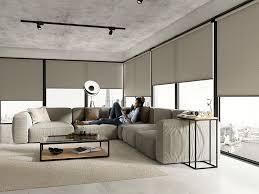When it comes to enhancing outdoor comfort and design, sun shade colors play a far more significant role than many realize. The color of your sun shade doesn’t just affect how your space looks—it also determines how much heat, light, and UV radiation are filtered through. Choosing the right shade color can make your patio, balcony, or outdoor seating area both visually appealing and functionally efficient.
1. Understanding the Role of Sun Shade Colors
Sun shades are designed to block or filter sunlight, reduce glare, and create a comfortable environment. However, the color of the fabric dramatically impacts how much heat and light pass through.
In essence:
-
Darker colors absorb more light and heat.
-
Lighter colors reflect sunlight and keep areas cooler.
Therefore, choosing the right sun shade color depends on your climate, purpose, and aesthetic preferences.
2. Light vs. Dark Sun Shade Colors: What’s the Difference?
Light Colors (White, Beige, Cream, Light Gray)
Light-colored sun shades are ideal for hot, sunny climates. They reflect a large percentage of sunlight, keeping spaces cooler and brighter.
-
Pros: Reflect heat, reduce glare, brighten dark areas.
-
Cons: Show dirt and stains easily, less privacy.
-
Best for: Patios, terraces, and poolside areas in warm regions.
Dark Colors (Black, Charcoal, Navy, Brown)
Dark shades absorb heat but offer excellent glare reduction and greater UV protection. They’re perfect when you want to minimize brightness and create a cozy ambiance.
-
Pros: Superior UV blocking, reduces glare, offers better privacy.
-
Cons: Retains heat, can make spaces warmer.
-
Best for: Cooler climates or shaded areas that need extra protection from glare.
3. How Sun Shade Colors Affect Heat and Light
The thermal performance of your sun shade depends on color and fabric density.
-
White and cream shades reflect up to 80% of sunlight, helping maintain cooler temperatures.
-
Medium tones like taupe or gray strike a balance between reflection and privacy.
-
Dark colors can absorb up to 70% of sunlight, which may warm the area but also cut down brightness effectively.
Understanding these energy dynamics can help you customize your comfort—especially in patios, outdoor restaurants, or office balconies where thermal control matters.
4. Popular Sun Shade Colors and Their Meanings
Each sun shade color conveys a different mood and aesthetic value. Let’s explore what each represents:
-
Beige & Sand: Natural, earthy tones that blend well with outdoor landscapes. Ideal for modern or rustic themes.
-
Gray: Versatile and neutral, suitable for contemporary spaces. It balances brightness and heat absorption.
-
Black: Elegant and bold, perfect for creating shade and privacy in urban or modern settings.
-
Blue: Refreshing and cool, reminiscent of the sky and sea—ideal for pool areas.
-
Green: Invokes calmness and nature, great for gardens and eco-friendly designs.
-
Terracotta & Brown: Warm, grounding shades that complement stone or brick exteriors.
-
White: Clean, bright, and reflective—perfect for tropical or coastal homes.
Choosing a shade that harmonizes with your building’s color palette enhances curb appeal and atmosphere.
5. Matching Sun Shade Colors with Architecture
Your shade’s color should not only serve a functional role but also complement your architecture.
-
Modern homes: Go for monochromatic tones like gray, black, or charcoal for a sleek, minimalist appearance.
-
Traditional spaces: Opt for earthy hues like beige, brown, or terracotta for a classic look.
-
Coastal properties: Whites, blues, and light grays give a breezy, coastal vibe.
-
Commercial areas: Neutral shades maintain a professional appearance while regulating heat.
By aligning your sun shade color with the building’s structure and purpose, you create harmony and balance in your outdoor design.
6. Psychological Impact of Sun Shade Colors
Colors can influence mood, comfort, and perception of space:
-
Warm colors (brown, terracotta) feel inviting and cozy.
-
Cool colors (blue, green, gray) evoke calmness and relaxation.
-
Neutral tones (beige, white, taupe) create a sense of openness and simplicity.
If you’re designing an outdoor lounge, restaurant, or café, the emotional tone set by the color of your sun shade can shape how people feel in your space.
7. Tips for Choosing the Right Sun Shade Color
Here are a few expert tips to help you make the right decision:
-
Analyze sunlight exposure: Choose lighter colors for high-sun areas, darker ones for partial shade.
-
Consider maintenance: Darker colors hide dirt better; lighter ones need frequent cleaning.
-
Match with surroundings: Blend your shade with walls, flooring, or furniture.
-
Think long-term: UV rays can fade colors—opt for fade-resistant fabrics.
-
Test samples: Always compare color swatches under natural light before buying.
8. Trending Sun Shade Colors in 2025
Modern outdoor design trends lean toward neutral elegance and earthy sophistication. Popular shades include:
-
Charcoal Gray: A modern favorite that balances warmth and minimalism.
-
Stone Beige: Complements most outdoor materials beautifully.
-
Olive Green: A biophilic color trend inspired by nature.
-
Cool White: Brightens outdoor dining spaces with a clean aesthetic.
-
Muted Terracotta: Adds a touch of Mediterranean warmth.
These colors not only look stunning but also align with sustainable and energy-efficient design philosophies.
9. Final Thoughts
The color of your sun shade is more than a visual choice—it’s a strategic design decision that influences comfort, energy efficiency, and atmosphere. Whether you prefer the brightness of white or the sophistication of charcoal, the right sun shade color can transform your outdoor living experience.
Choose wisely, match intentionally, and shade beautifully.



